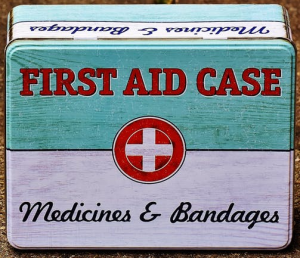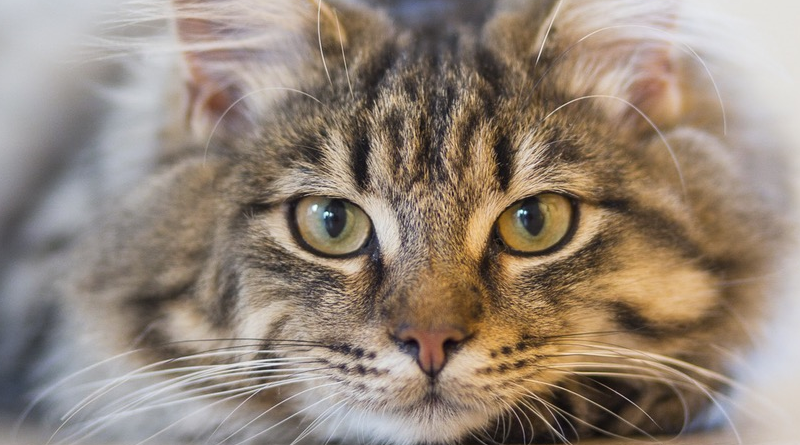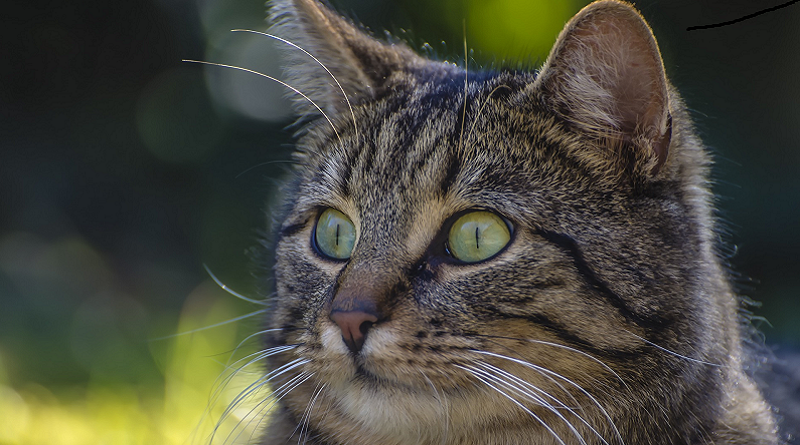How To Stop a Cat Scratching Furniture – Foolproof Methods

If your cat is driving you nuts with scratching and you look like this from time to time, you’re not alone! You hear it from a distance…Your cat is after your rug, or your couch, or your chair, or maybe one of a hundred different things in your house. You’ve paid good money for all these things and you don’t want your cat destroying them just for fun right? Well there’s good news, your cat isn’t doing this for fun or just to annoy you (at least most of them aren’t!). The better news, you can train your cat to stop doing this kind of thing to your furniture. So how to top a cat scratching furniture is today’s topic, but before we get into training your cat not to do this, let’s first look into why they scratch to begin with.
So why do cats scratch?
Cats have claws that grow rather quickly and will continue to do so their entire lives. Just like human fingernails or beaver teeth or rat teeth, they need constant attention. Beavers constantly chop down trees with their teeth which keeps them in check. Cats are not much different in this respect.
Cats claw and scratch things to shed off the outer shell of their current claw and reveal the newer layer underneath. This has two primary impacts, first and foremost they need to find something to scratch to get the old layer to fall off. The second is that of course your cats nails are going to get sharper as the nail gets longer and they continue to shed the outer layers.
How do I convince my cat to stop scratching?
The most common and best method to stop your cat from scratching up things you care about is to buy your cat something you want her to scratch up. No surprise I’m sure you’re going to say, you’ve probably already got one. In fact you’ve probably already got a few different things you’ve bought for your cat to see which one he or she likes. So the real question at hand is how do I convince my cat to start using the things I’ve bought for him or her to scratch.
First and foremost it is important to understand that in general it is far easier to teach an animal a new behavior than it is to teach them to stop an old behavior. This is because positive reinforcement is far more effective than negative reinforcement. If I just got too “sciency” for you don’t worry about. The key take away is that when you reward your cat for something they’ve done well they are more likely to remember it than if you punish them for something bad.

Positive reinforcement
Given this your job is mostly focused on convincing your cat that using the scratching post is a good thing and will result in something positive. That something positive should depend on what motivates your cat. So what motivates your cat?
Every cat is different, but the most common things that drive cats are food (treats/catnip etc.), attention & praise. So you need to start providing positive reinforcement when your cat uses your selected scratching post. There are a few great ways to do this and combining these methods works even better if your cat reacts to more than one of them:
- Catnip: Rub catnip right into the rope/material of the scratching post. A lot of cats are crazy about catnip and will scratch the post just to get to the captnip. This works extremely well because the cat not only is using the scratching post, but is getting automatically rewarded for doing so. This establishes a great amount of reinforcement for your cat to continue coming back to the post over and over.
- Treats: Every time your cat uses the scratching post be sure to provide a treat for doing so. While some cats aren’t food motivated in any way, the greater portion of our felines enjoy a good snack. Obviously be careful not to overfeed your cat with treats as this can have other negative consequences like becoming overweight. If your cat is really food motivated, try to train them right before meal time because then they’ll be craving those treats a little more than usual
- Praise & Love: Every time your cat uses the scratching post be sure to praise her and tell her what a good cat she is. While cats don’t necessary know what you’re saying they are clearly smart enough to pick up on tone and emotion and they do register positive reinforcement in this way.

Negative Reinforcement
Now I know that positive reinforcement can be a slow road and your cat may still scratch your furniture while he or she is learning. So what can we do to help deter the bad behavior even if it isn’t going to be as impactful? Beyond the positive reinforcement options there are a wide variety of deterrents available to stop your cat from scratching things you don’t like them scratching.
In general this tends to be less effective, but it is still worth exploring these options, especially if you have only a couple of places your cat seems particularly interested in scratching up:
- Sprays/Deterrents: There are numerous sprays available on the market that have a scent that humans can’t really detect, but tend to drive cats away from a specific area. This Bitter Apple Spray for Cats
is one of them. If you have a specific spot or spots you don’t want your cat to be scratching you can reapply these sprays every couple of days or weeks depending on the directions and it will help deter your cat.
- Double Sided Tape: You can put double sided tape on furniture where your cat commonly scratches today. When your cats sensitive paw pads touch the tape they will not like and it will deter them in the future. Just be careful not to damage your furniture with the tape!
- High Pitched Yelps: For lack of a better description, a high pitched yelp is basically you making a bit of a loud yelp when your cat is scratching something you don’t want them to scratch. Cats don’t tend to like loud noises, no surprise since none of us do. But if you can do this whenever it happens, especially if you’re out of sight, it can be an ok deterrent.
A few other options are available to you as deterrents, but they can sometimes have an adverse impact depending on the cat and the frequency with which you need to use them:
- Spray or mist bottles filled with water: You can buy a spray bottle pretty much anywhere these days. The general idea is that you spray the cat whenever the cat is scratching where you don’t want them to scratch. But be careful because they might just starting being afraid of you. I would recommend you only use this method if you can spray them without them seeing you do it (which is really hard).
- Shaking a tin or aluminum jar of change: Pretty straight forward. Get a coffee can like the old Folgers Crystals ones (do those still exist?) that is empty and put some change in it. When your cat is scratching something he or she shouldn’t be shake the can. Cat’s don’t like this noise and will stop what they are doing. This one is a little easier to do outside the room where your cat can’t see you, but again has the risk of them seeing you and starting to associate the sound with you instead of with the scratching..
Yelling at your cat is a big no no…
 Let’s also specifically discuss yelling at your cat. You should be very careful about yelling at your cat, especially on a constant basis. I know you’re tempted to do it, I know I am too from time to time. They keep getting in front of your laptop while you’re typing (like right now). They keep bonking their head into your phone while you’re trying to do something. They keep scratching up your stuff! I know how it goes, but you have to be the bigger person. Not physically in this case, you’re likely a lot bigger than your cat already.
Let’s also specifically discuss yelling at your cat. You should be very careful about yelling at your cat, especially on a constant basis. I know you’re tempted to do it, I know I am too from time to time. They keep getting in front of your laptop while you’re typing (like right now). They keep bonking their head into your phone while you’re trying to do something. They keep scratching up your stuff! I know how it goes, but you have to be the bigger person. Not physically in this case, you’re likely a lot bigger than your cat already.
Bottom line. You need to stay calm because if you yell at your cat often she can and will start to associate really loud and unhappy sounds with you and over a longer period of time can become afraid of you as opposed to afraid of scratching whatever they are scratching.
Let’s wrap it up…
A few other considerations to keep in mind. In general cats tend to like a scratching post that is tall enough for them to use while fully “stretched out” standing up. This means you might need to buy a rather large scratching post. Check out my review of my favorite scratching post by Pioneer Pet. It is one of my favorites and I’ve seen great success with it with both our resident cats and multiple fosters. Rubbing a bunch of catnip directly into the post has worked really well, just make sure you sweep up what fell off so they don’t get the catnip for free to speak.
A last closing note. The most important part about this entire article is that you need to be persistent with your cat. Training a cat to do what you want requires consistency, timeliness and persistence. Be sure to reward your cat immediately after they scratch on the post and do it every time you see happen. Over the long haul you can start giving fewer and fewer treats and simply providing pets and telling her what a good job she is doing. If you don’t see much progress after a week don’t give up, keep at it. It can sometimes take a few weeks to start modifying your cats behavior.
If you have any additional items you’d like to see added to this post then please comment below or directly email me at Craig@StuffCatsWant.com so I can update the information here.
StuffCatsWant.com is a participant in the Amazon Services LLC Associates Program, an affiliate advertising program designed to provide a means for sites to earn advertising fees by advertising and linking to Amazon.com.
















